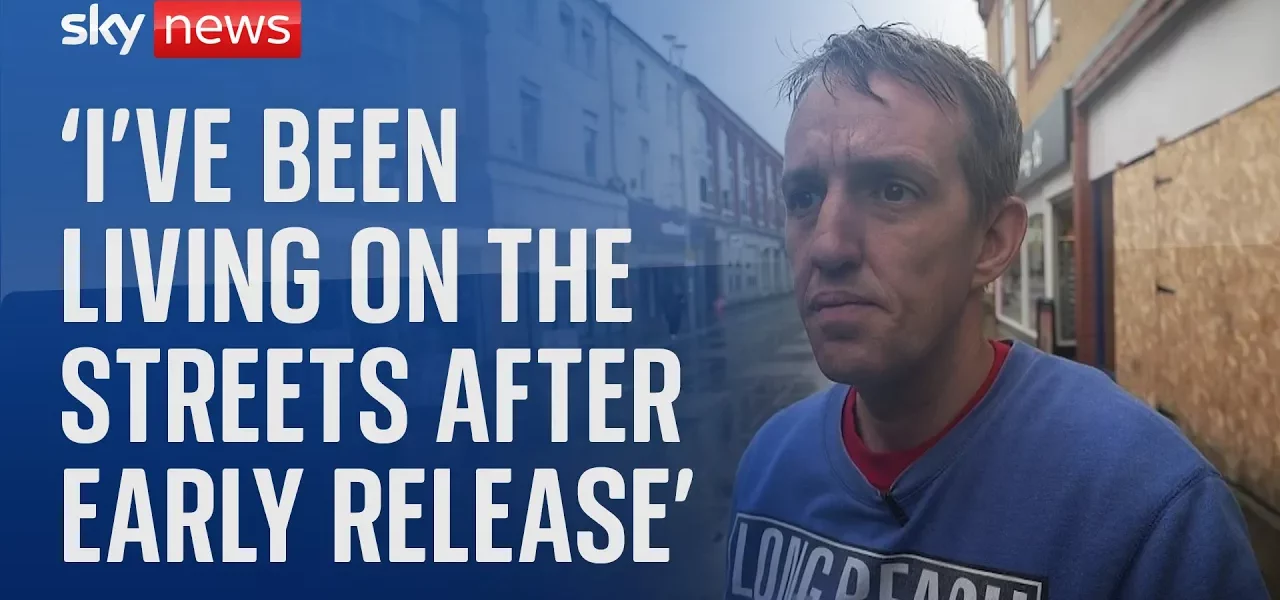Out of Prison: Leon’s Struggle with Homelessness and Addiction

In this article, we delve into the life of Leon, a man released from prison who faces the harsh realities of homelessness and addiction. His story sheds light on the systemic issues that many individuals encounter after incarceration, illustrating the dire need for support and resources to facilitate their reintegration into society.
Introduction
Leon’s life after prison is a poignant example of the struggles faced by many individuals who find themselves released back into society without adequate support. Having served time for a fray, Leon was released early but found himself homeless and vulnerable to falling back into addiction. This article walks through 24 hours in his life, highlighting the challenges of finding stability and the emotional toll of his circumstances.
The Reality of Early Release
Leon’s early release from prison was not the beginning of a hopeful new chapter but rather a descent into despair. With no preparation or support from probation services, he was thrust into a world that felt foreign and hostile.
Initial Challenges
Upon release, Leon quickly discovered that the absence of a stable living situation made it impossible for him to regain his footing. Many ex-prisoners face similar challenges:
- Lack of housing
- Limited access to employment opportunities
- Absence of social support networks
- Struggles with substance addiction
Fall into Addiction
Finding temporary shelter among heroin users led Leon back to drug use, emphasizing the cyclical nature of addiction and homelessness. The environment he found himself in was fraught with temptation, and before he knew it, he was shoplifting to support his habit.
The Cycle of Homelessness and Imprisonment
Leon’s story is not unique; it reflects a larger trend among those released from incarceration. Unfortunately, many individuals find themselves reoffending simply to escape the dire conditions of life on the streets.
Statistics of Reoffending
Research shows that a significant percentage of prisoners are released onto the streets, which contributes to a high reoffending rate:
- 133% of prisoners released are homeless.
- Those without stable accommodation are more likely to return to prison.
- Winter conditions exacerbate the situation, pushing individuals to reoffend for basic survival.
The Emotional Toll
Living on the streets, Leon found himself feeling increasingly hopeless. The thought of returning to prison became more appealing than enduring the harsh realities of homelessness. His struggle illustrates the emotional and psychological impacts of such a lifestyle, where feelings of worthlessness and despair can lead to drastic measures for survival.
Seeking Refuge
As night falls, Leon contemplates his next move. The cold and the darkness push him to seek temporary refuge in places like emergency rooms where he can find warmth and safety.
Finding Shelter
Desperation leads Leon to consider actions that would allow him to stay indoors, even if it means risking re-arrest. His resolve highlights the survival instinct that drives many in similar situations:
- Smashing a window to get arrested.
- Feigning intoxication to receive police assistance.
- Seeking emergency medical attention for a warm place to sleep.
The Importance of Support Services
Organizations like outreach projects play a vital role in providing the necessary support to individuals like Leon. They offer:
- Hot meals and clothing
- Assistance with medical appointments
- Rehabilitation programs
Community Support and Outreach
Leon’s interactions with outreach workers reveal the critical nature of community support in breaking the cycle of homelessness and addiction.
Personal Stories of Recovery
Individuals like Fon, who have successfully navigated their own paths from addiction to recovery, underscore the importance of mentorship and support. Fon’s story demonstrates that recovery is possible with the right help:
- Overcoming drug addiction
- Finding stable housing
- Rebuilding self-worth and community ties
Statistics on Community Impact
Outreach programs are critical; however, they often operate without adequate funding. The demand for these services has doubled, exacerbated by early release schemes that do not provide sufficient transition support.
Conclusion
Leon’s story serves as a reminder of the complexities surrounding homelessness and addiction post-incarceration. The lack of stable housing is a significant barrier to successful reintegration into society. To prevent individuals from returning to prison, comprehensive support systems must be established. We must advocate for more resources and community support to help those like Leon find their way back to stability and dignity.
If you or someone you know is struggling with similar issues, consider reaching out to local outreach programs or support services. Every individual deserves a chance at a new beginning.
“`




